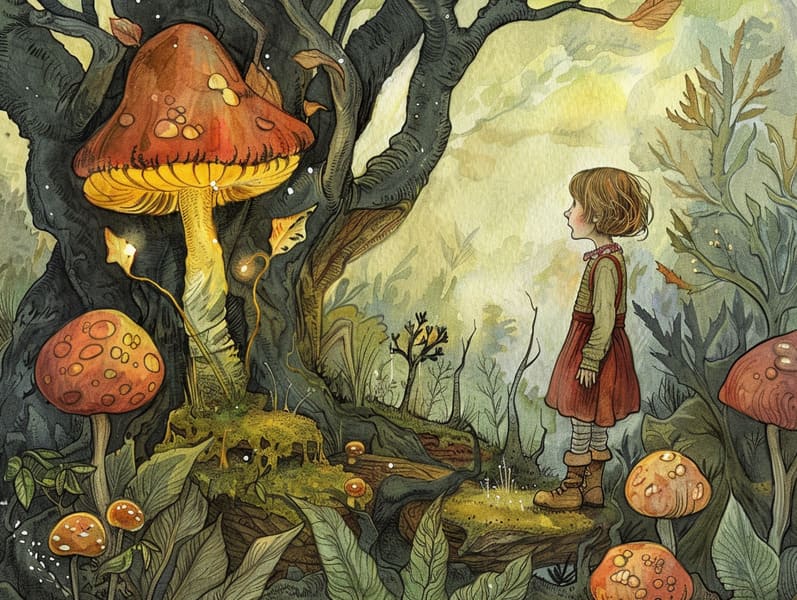
Short fairy tales have timeless appeal. These tales have been conveyed from one generation to the next centuries before they were ever transcribed. They were born from a variety of societies, including Western traditions. They were initially told among adults, often carrying themes and messages aligned with the societal norms and beliefs of the time.
The Grimm brothers, Jacob and Wilhelm Grimm, were among the first to assemble many of these beloved tales. Their anthology, "Grimm's Fairy Stories," included stories like "The Story of Cinderella," "Little Brother and Little Sister," and "Snow-White and Rose-Red," which have since become hallmarks in the world of iconic fairy tales. Similarly, the Danish author's fantastical tales, such as "The Mermaid," and "The Duckling that Could," have enchanted hearts worldwide, establishing their place in the pantheon of classic fairy tales.
Despite their historical roots, classic fairy tales remain as meaningful as ever, especially as nighttime stories for kids. These whimsical stories are now available in multiple formats, including gorgeously illustrated books, magical animations, and free fairy tales online.
Their ongoing significance can be ascribed to several magical reasons:
Life Lessons: Classic fairy tales often convey important moral lessons. Narratives like "The Boy Who Cried Wolf" teach the benefit of truth, while "The Story of the Tortoise and the Hare" highlight the qualities of steadfastness and unassuming nature. These stories offer little ones clear distinctions between good and bad, shaping their moral compass in a gentle yet profound way.
Compassion and Insight: Traditional fairy tales frequently feature protagonists facing obstacles and hardships, inspiring readers to comprehend with their struggles and boost their triumphs. For instance, "The Story of Beauty and the Beast" illustrates the necessity of appreciating inner worth to understand the real character of a soul, nurturing tenderness and comprehension.
Cultural Insights: Many fairy tales are deeply embedded in the cultural contexts from which they emerged. Reading these fairy tales can provide illuminating insights into different heritages, building a sense of cultural insight and perception.
Imagination and Innovation: The fanciful elements in timeless fairy tales—mythical entities—trigger children’s imaginations. These fairy tales transport readers to extraordinary realms, boosting creative dreams and a sense of fascination that endures a lifetime.
Traditional fairy tales are not only captivating but also teaching. They act as alluring tools in building various brain and heart skills in the young. When traditional fairy tales are told out loud, they boost communication skills by teaching new words and complicated sentence structures. This practice also develops auditory skills and focus, as young readers hang on every word, excited to see what happens next.
Furthermore, exploring the themes and characters of traditional fairy tales can enhance intellectual skills and problem-solving abilities. Children are taught to detect patterns, make predictions, and grasp cause and effect. These contemplations also ease young readers reveal their thoughts and feelings, boosting their emotional intelligence.
In today’s high-tech era, the accessibility of web-based fairy tales has made these tales more acquirable than ever. Web platforms and web apps make available vast collections of old fairy tales that can be experienced or listened through anytime, anywhere. Fairy tales spoken are particularly sought after, featuring an immersive method for children to enjoy these whimsical stories. Audio stories and voiced videos transport characters and settings to life, often augmented by charming musical scores and songs that boost the story adventure.
The timeless appeal of ancient fairy tales lies in their ability to evolve to modern days while keeping hold of their central messages. Contemporary takes of these narratives often bring in more different characters and modern settings, making them accessible to today’s audience. However, the key lessons of courage, kindheartedness, and lawfulness remain unchanged, continuing to influence readers of all ages.
Old fairy tales also offer a sense of reassurance and knownness. They impart upon a well-arranged narrative with a obvious beginning, middle, and end, often wrapping up with the closure of conflicts and the triumph of right over wrong. This uniformity can be solacing for young ones, presenting a sense of invariability in an unstable world.
Classic fairy tales continue to bewitch and enlighten new generations, maintaining their beauty and meaningfulness in modern society. As nighttime stories for kids, they disclose a perfect blend of fascination and comprehension, promoting moral values, empathy, and creativity. The availability of online fairy tales and the well-liked nature of fairy tales read aloud assure that these old fairy tales remain acquirable to new generations.
By safeguarding and communicating these fairy tales, we continue to value the rich tapestry of lore and cultural heritage. Whether you are enjoying a vividly illustrated book, discovering a web collection, or listening via an read-aloud story, the delight of ancient fairy tales is always within reach. These narratives check here highlight of the undying effect of tales and its ability to connect us across eras and regions.
Regardless if you are exploring a gorgeously illustrated book, accessing a internet library, or listening to an audio story, the splendor of popular fairy tales is always within reach.
These fairy tales reveal of the unceasing impact of storytelling and its ability to bind us across eras and regions, establishing a link that enchants and educates alike.